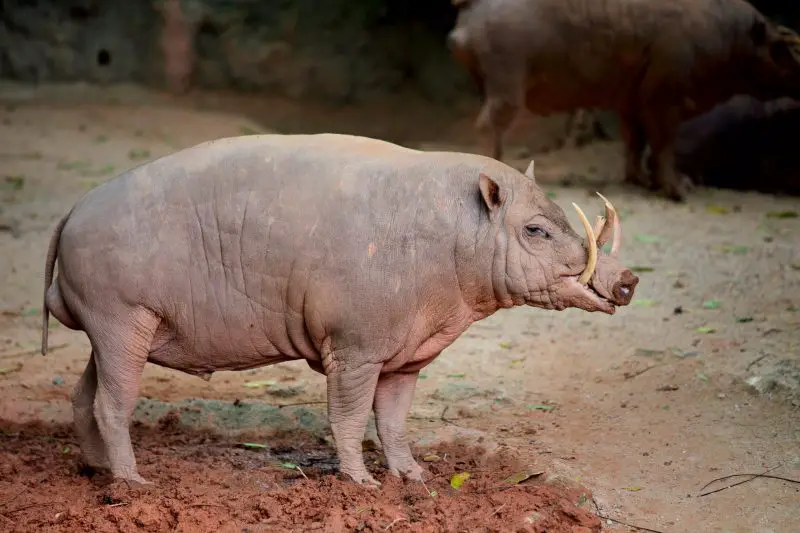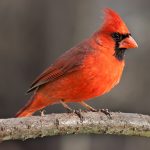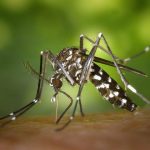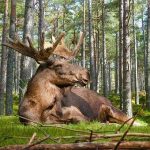Tusks are extended, continually growing frontal teeth that protrude widely outside the mouth of some mammal species. Tusks are frequently seen in pairs, but they are not always so. They are most typically canine teeth, as seen in warthogs, pigs, and walruses, or extended incisors, as seen in elephants and other large mammals.
Although males and females of most tusked animals have tusks, the males’ tusk size is often greater than the female’s. Tusks are typically curved, yet the narwhal’s lone tusk is straight and has a helical structure, in contrast to the rest of the animal’s tusks.
African Elephants
- Scientific Name: Loxodonta africana
- Type of Animal: Mammal
- Diet: Herbivore
- Tusk Size: 6 feet
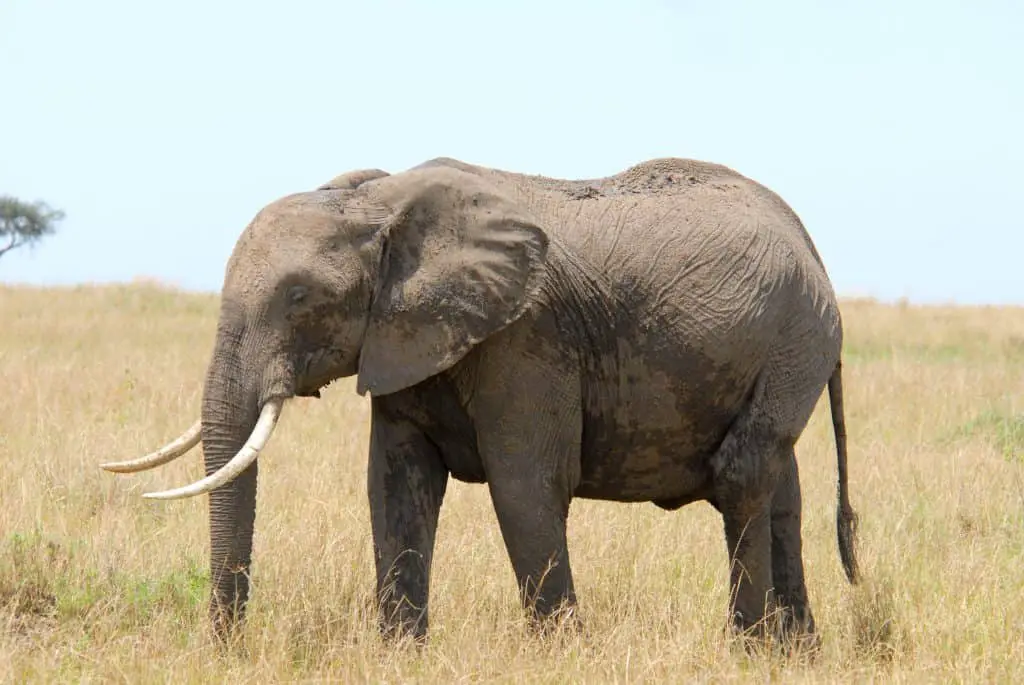
The African elephants are the owner of majestic tusks that have been responsible for the deaths of far too many animals. The elephant’s tusks are composed of the same components and materials that are found in human teeth, namely dentin and enamel, to form the tusks.
The main trouble with elephants is humans killing them for the tusks. An African elephant’s tusks are pleasantly curved and about 6 feet long.
They used their tusks in digging, lifting, ripping tree bark, battle, and defending themselves from attackers. Interestingly, an elephant’s tusks may be present in both positions right and left. The elephant’s preferred tusk will be more worn than the other.
Asian Elephants
- Scientific name: Elephas maximus
- Type of Animal: Mammal
- Diet: Herbivore
- Tusk Size: 3 feet
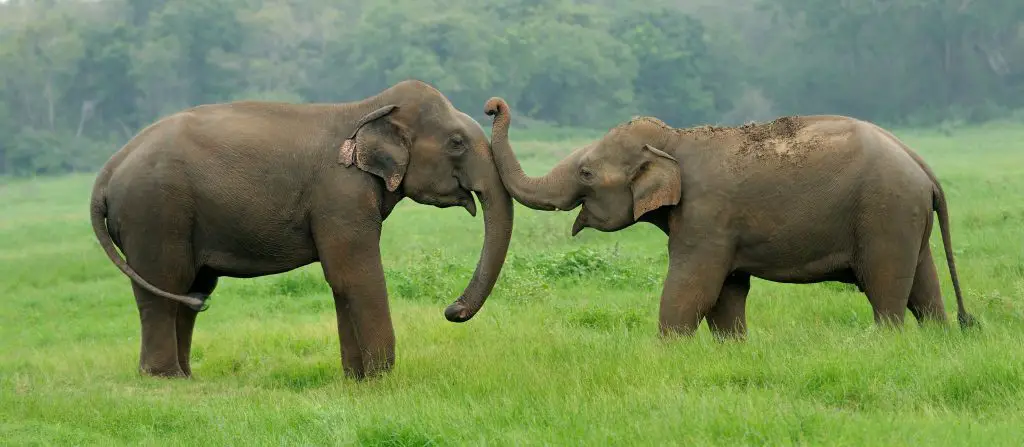
Male Asian elephants are the only ones that have tusks, hence poaching is restricted to males alone in this species. Selection of tuskers for ivory removal may result in higher in the number of tusk-less adult males in the population as a result of the ivory removal.
The exploitation of Asian elephants for ivory continues to be a danger in various parts of the world. However, African elephants are presently the source of the majority of illegal ivory, rather than Asian elephants.
Tusks are used to dig for water, salt, and pebbles, uproot trees, move fallen trees and branches, work, exhibit, mark trees, defend trees, and protect the trunk. Right or left tusked elephants are known.
Common Warthog
- Scientific name: Phacochoerus africanus
- Type of Animal: Mammal
- Diet: Omnivorous
- Tusk Size: 20 inches
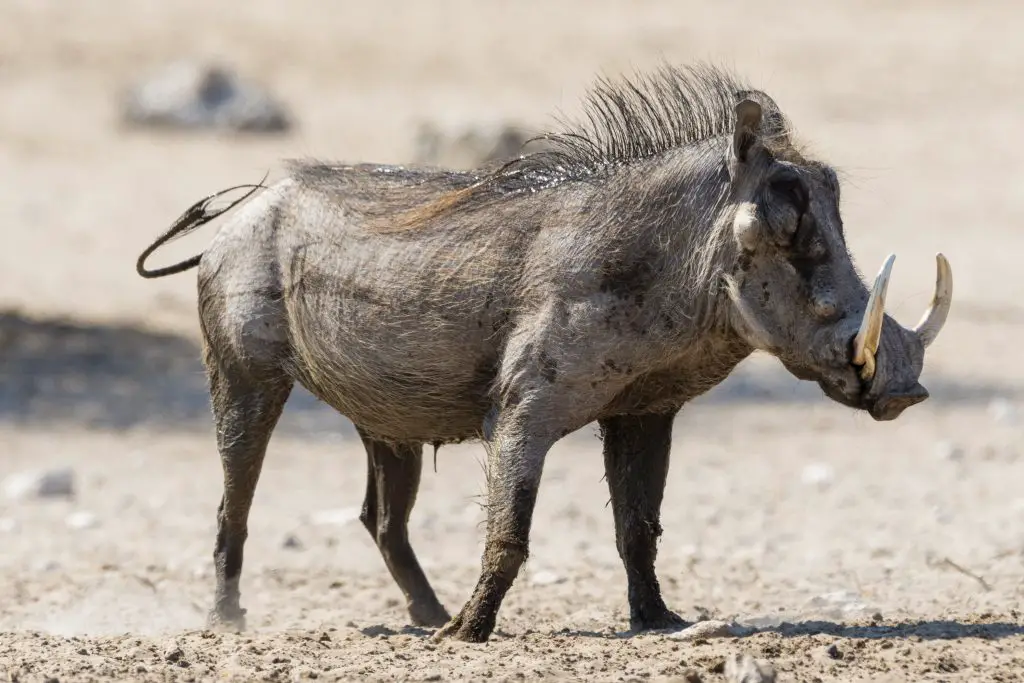
The warthog is a widespread sub-Saharan African species. The male and female members of the Suidae family have tusks on their faces. Aside from tusks, it also has facial warts, or wattles, on its head.
Furthermore, the animal possesses not one, but two sets of tusks. During ritual fighting, males use their upper tusks to defend themselves against other males, but they are cautious about using their lower tusks, which can cause significant harm.
The tusks of the boars are 20 inches long, while those of the sows are shorter.
Walruses
- Scientific name: Odobenus rosmarus
- Type of Animal: Mammal
- Diet: Carnivorous
- Tusk Size: 3 feet
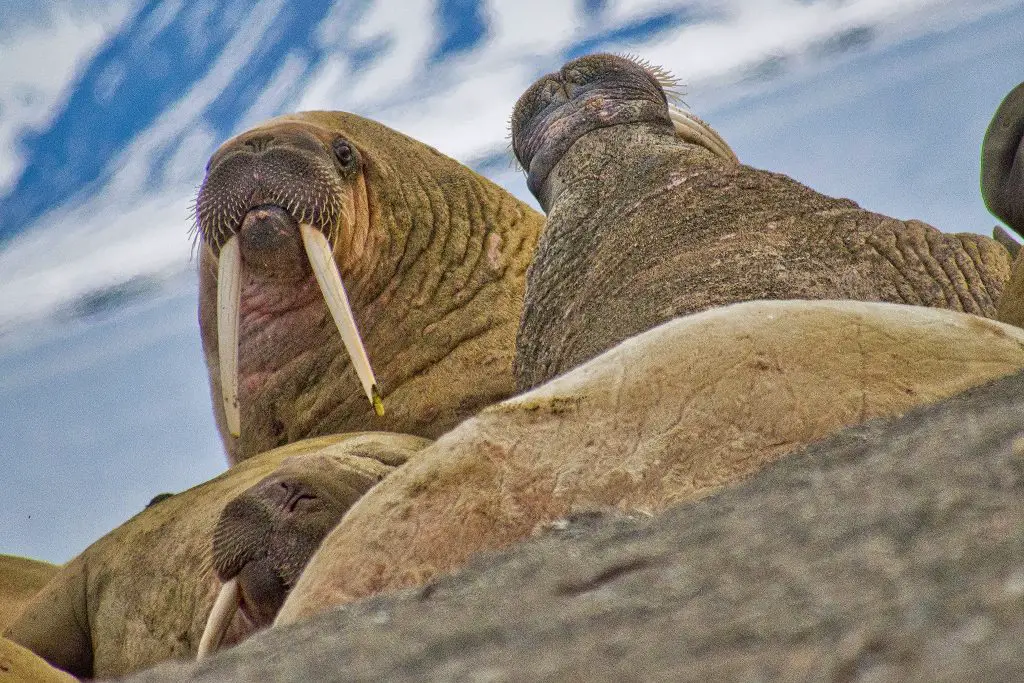
The walrus is a pinniped that may be found along the coasts and on ice floes in the Arctic Ocean. It is the only pinniped that has been seen to acquire tusks.
These tusks may grow as long as 3 feet in large male. Females have tusks, although they are shorter than those of males. The tusks are used to make holes in the sea ice and to assist the animal in hauling itself out of the water and onto the same ice floes again.
Scrimshaw was created by sailors using walrus tusks, among other kinds of marine ivory, to decorate their ships.
Babirusa
- Scientific name: Babyrousinae babyrousinae
- Type of Animal: Mammal
- Diet: Omnivorous
- Tusk Size:17 inches
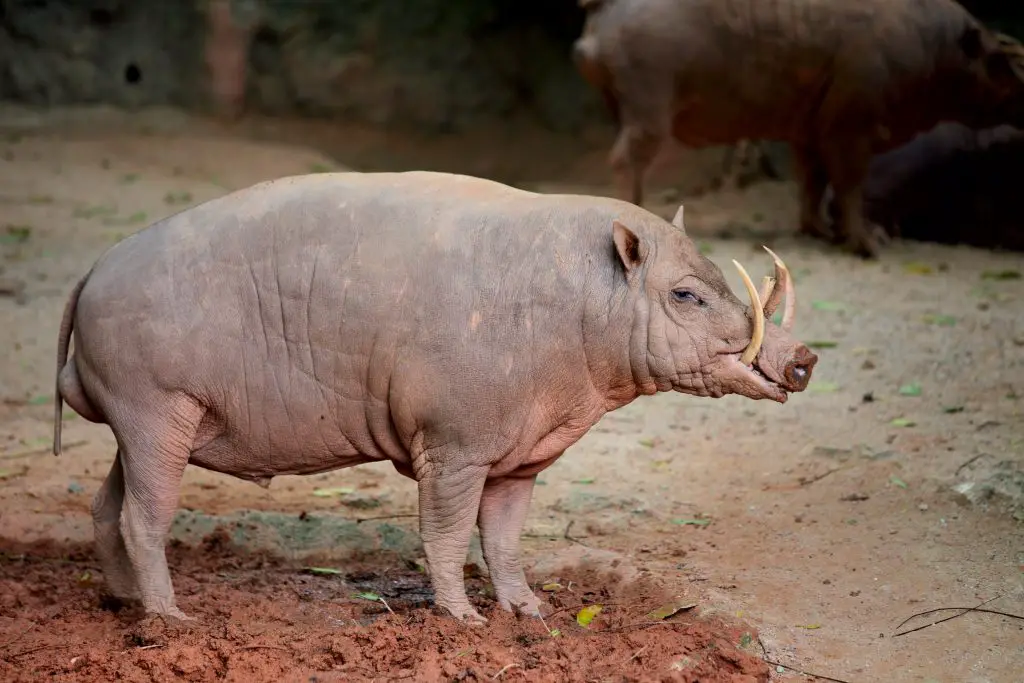
This species of the wild pig is mostly found in the forests and around sources of fresh water on the Indonesian island of Sulawesi and its neighboring islands.
The upper canines of the male babirusa are not even located in the mouth of the animal; rather, they develop from the side of its upper teeth until they pierce through the top of its nose, which makes unique them. Then they curl backward till they create a kind of cage around the babirusa’s head.
They can grow to be so lengthy that they can puncture the skull or the eyes of an animal. The tusks of babirusa boars are also lower than those of other wild boars, and they protrude through the side of their mouths.
The tusks are responsible for the animal’s name, which translates as “pig deer,” since the tusks are so long and curled that they appear on its face like deer antlers.
Beaked Whales
- Scientific name: Berardius bairdii
- Type of Animal: Mammal
- Diet: Canivorous
- Tusk Size:17 inches
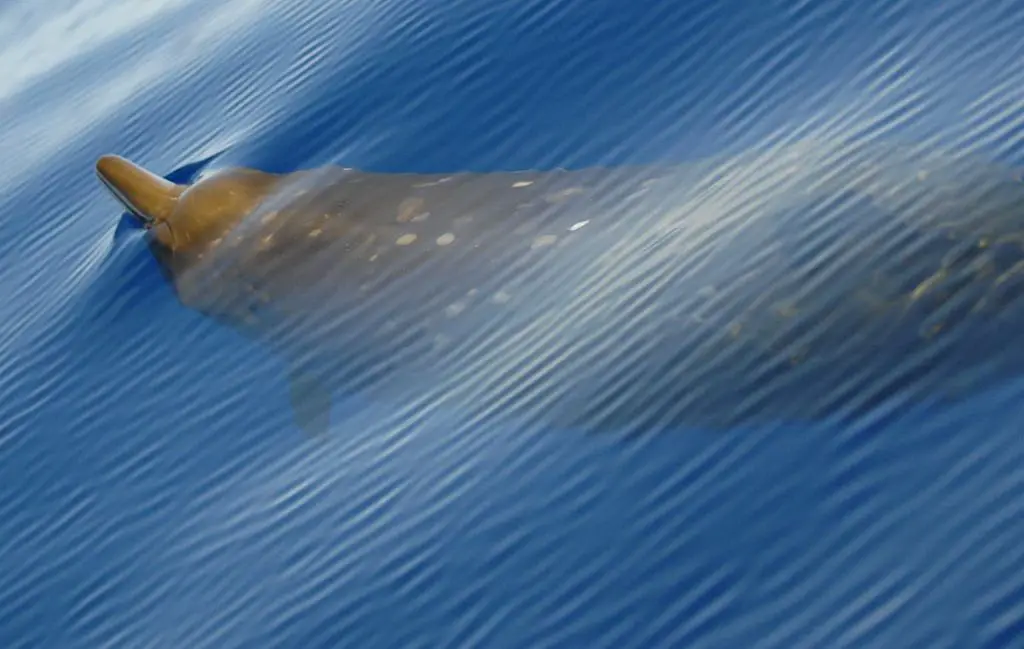
This common beaked whale inhabits the southern seas’ coldest regions. It is easily identified by its black and white coloring. The beak is white, and a white cape spreads from the top of the skull to the little dorsal fin.
The belly has a white patch and all other parts are shiny blue-black. Aside from its color, these animals are known for the tusks, the male’s tusks are distinctive and unique.
Each side of the animal’s lower jaw has tusks. The paddle-shaped tusks feature tiny tentacles on the tips. So, after the tusks are fully formed, the animal’s mouth cannot expand very wide. In order to feed, the male must suck food into its beak.
Chinese Water Deer
- Scientific Name: Hydropotes inermis
- Type of Animal: Mammal
- Diet: Hebivores
- Tusk Size: 3 inches
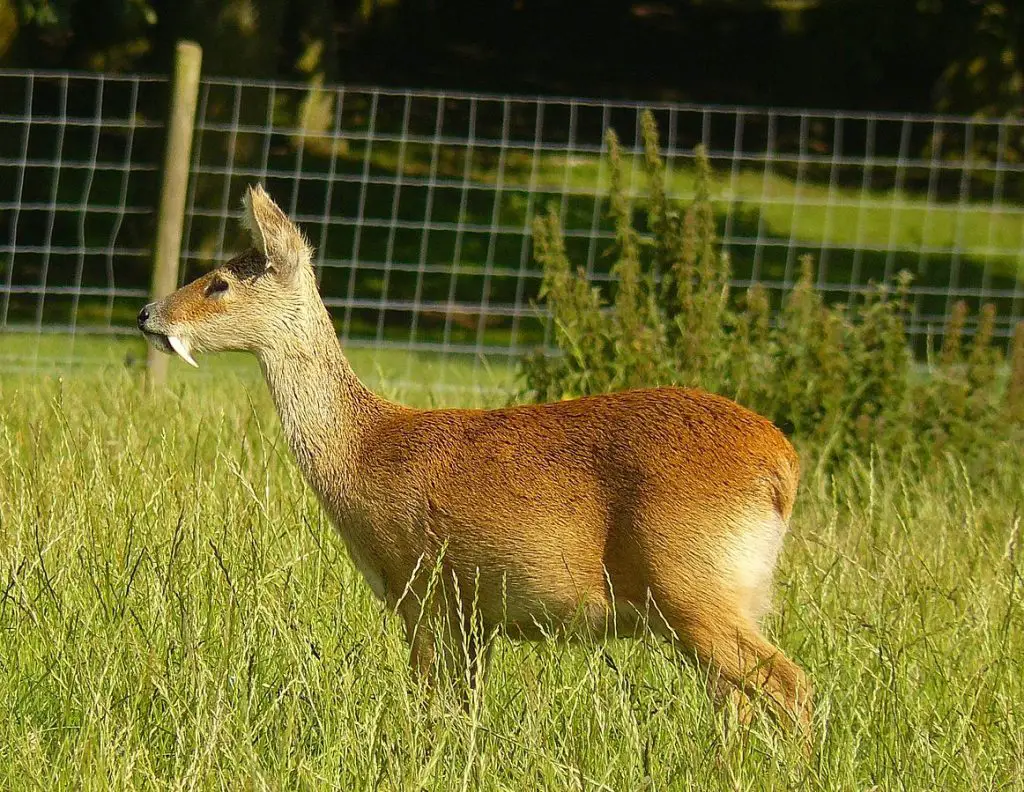
Deer are adorable and gorgeous, but have you ever seen a deer with tusks on its rump? Instead, you are going to learn about the deer with tusks known as “Chinese water deer,” which can be found in Korea, Chang Jiang, and China, but they were also imported to the United Kingdom later in history.
Ironically, the Chinese water deer do not have antlers, but instead have tusks, which they use to defend themselves. These tusks are long and curved, and they are made from the upper canine’s teeth, which have been changed. The length of these tusks is around 5 cm.
Wild Boar
- Scientific Name: Sus scrofa
- Type of Animal: Mammal
- Diet: Hebivores
- Tusk Size: 11 inches
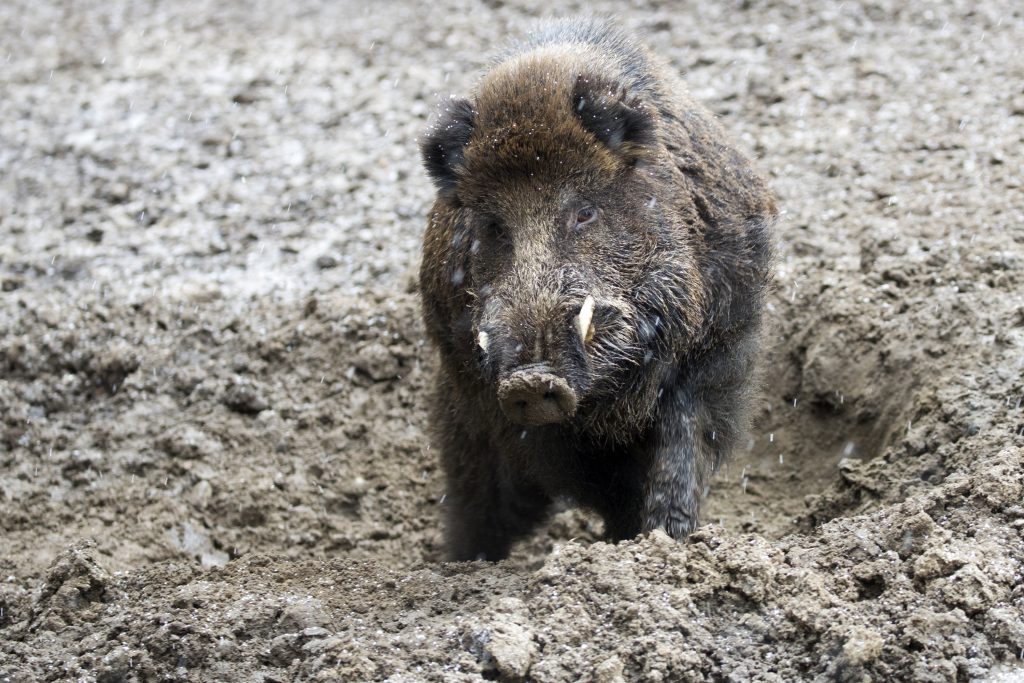
A variety of names for the wild boar are used throughout Europe, Africa, India, the Andaman Islands, China, and other parts of the world.
The wild boar is also referred to as the wild swine or the wild pig in certain regions. Although the average length of a wild boar tusk is roughly 11 inches, the tusks of certain boar may grow up to 16 inches in length.
Wild boars, in contrast to other deer species, are nocturnal creatures, which means they relax and sleep during the day and are active throughout the night.
Hippopotamus – Hippo
- Scientific Name: Hippopotamus amphibius
- Type of Animal:Mammal
- Diet: Hebivores
- Tusk Size: 3 feet
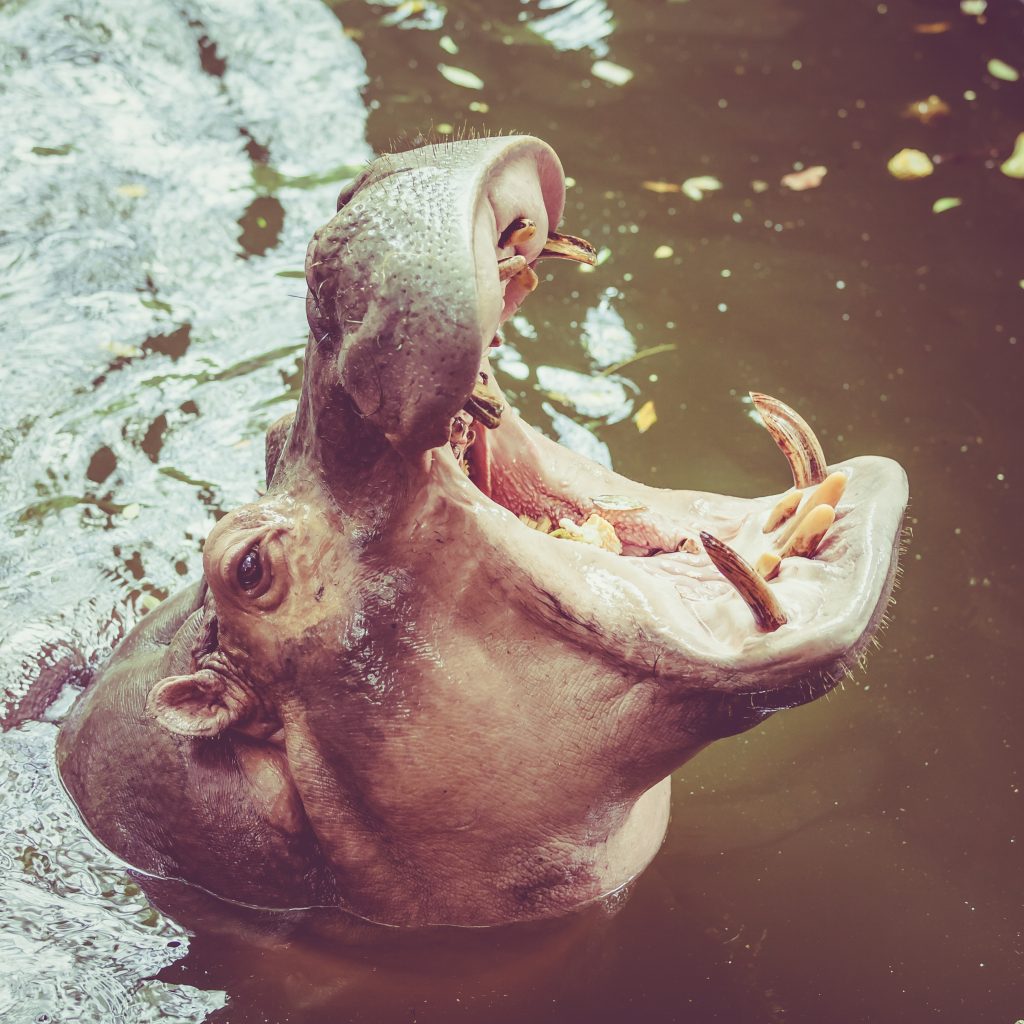
Hippos, often called ‘water horses,’ are mainly found in Uganda, Tanzania, Kenya, Ethiopia, Somalia, Sudan, and other countries.
The upper incisors and lower canines of these animals have huge tusks with pointed tips, which are present in the upper incisors and lower canines. They may grow to be around 3 feet in length when the enamel is applied to them.
It is interesting to note that the ivory of hippos is tougher than that of elephants, making carving the tusks of hippos more difficult.
Tufted Deer
- Scientific Name: Elaphodus Cephalophus
- Type of Animal: Mammal
- Diet: Herbivores
- Tusk Size:1.5 inch
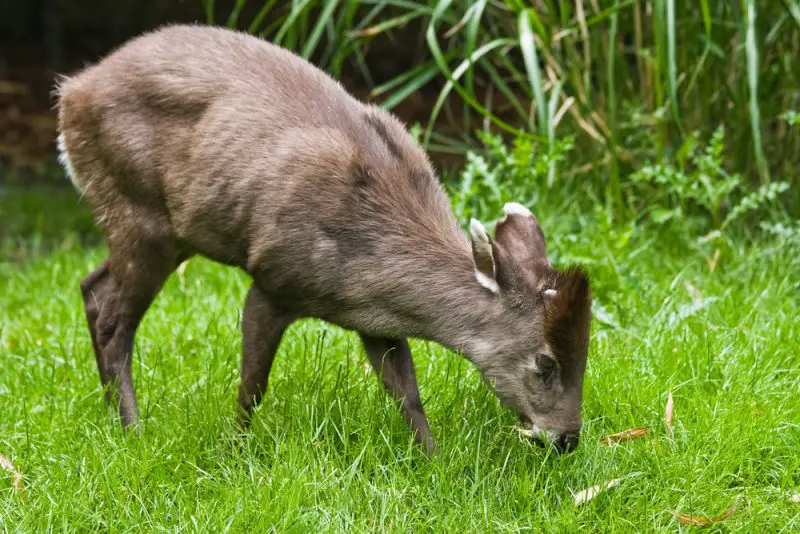
The tufted deer is a little-sized deer with two tusks that may be found in China and other Asian countries, including Japan and Korea. Our fear of the innocent tufted deer stems from their large canine fangs, which make them appear like vampires since they are around 1 inch long and may be used for defense.
When predators are pursuing them, these deer flee in a ‘S’ formation in order to avoid being caught in the crossfire.
Elk
- Scientific name Alces alces
- Type of animal: Mammal
- Diet: Herbivorous
- Size of Tusk: 6 inches
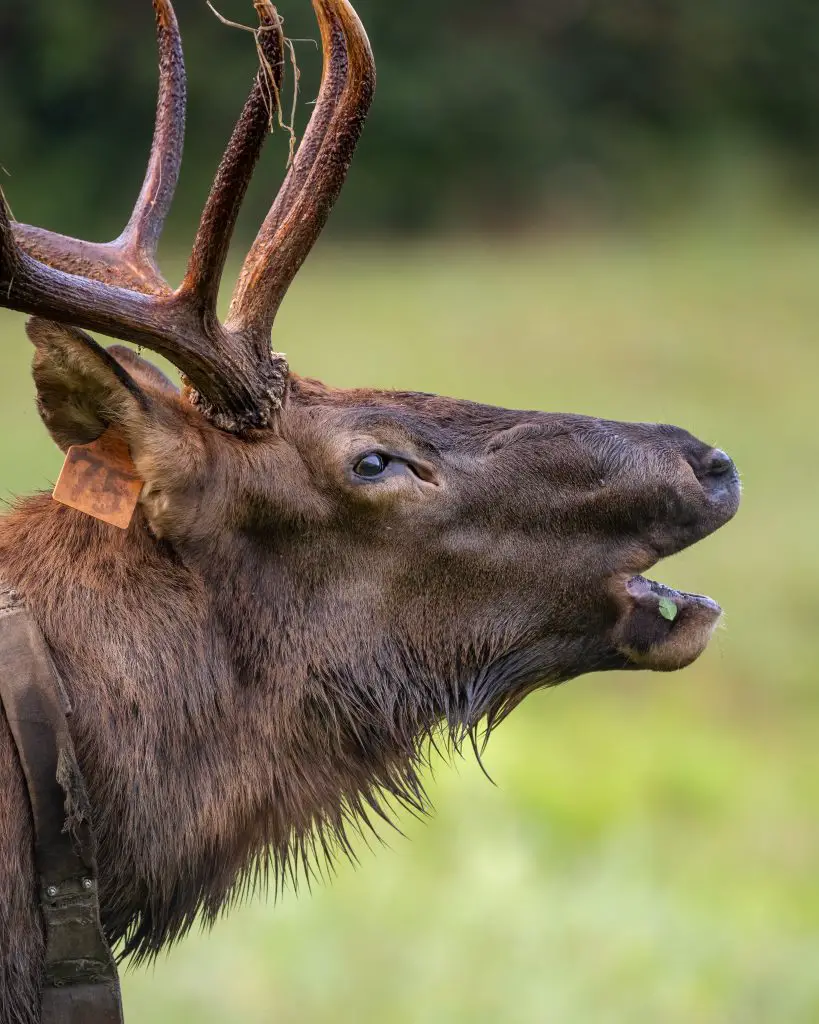
The Elk, which is a member of the old world deer family and can be found in North America, Canada, and zoos, is the next mammal to have tusks.
The sorts of Elk might include Manitoban Elk, Rocky Mountain Elk, Tule Elk, Roosevelt’s Elk, and Eastern Elk.
It is thought that today’s Elk have ivory-type tusks that may grow up to 6-8 inches in length, which were passed down to them from their forefathers who had ivory-type tusks thousands of years ago.
Siberian Musk Deer
- Scientific name: Moschus moschiferus
- Type of animal: Mammal
- Diet: Herbivorous
- Size of Tusk: 3 inches
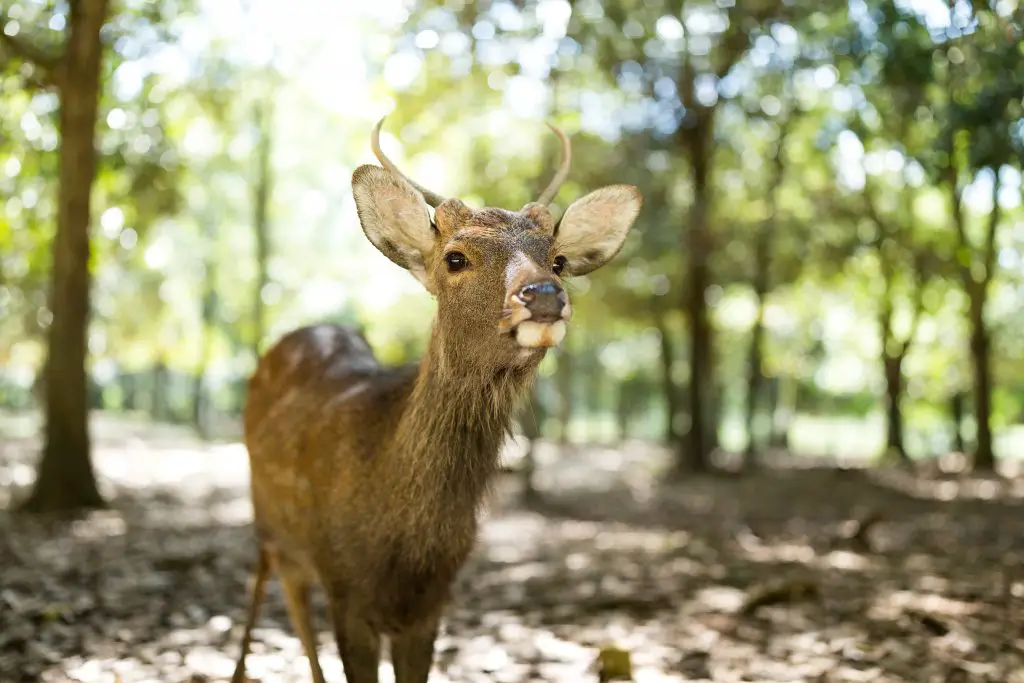
Tusks may be seen on a variety of musk deer species.
Those deer species include the Siberian musk deer, the Alpine musk deer, the White-bellied musk deer, and the Black musk deer, among others. Instead of antlers, the male musk deer is armed with a long tusk that is around 3 inches in length, which serves as a defensive weapon against predators.
Narwhal
- Scientific name: Monodon monoceros
- Type of Animal: Mammal
- Diet: Carnivorous
- Tusk Size:10 feet
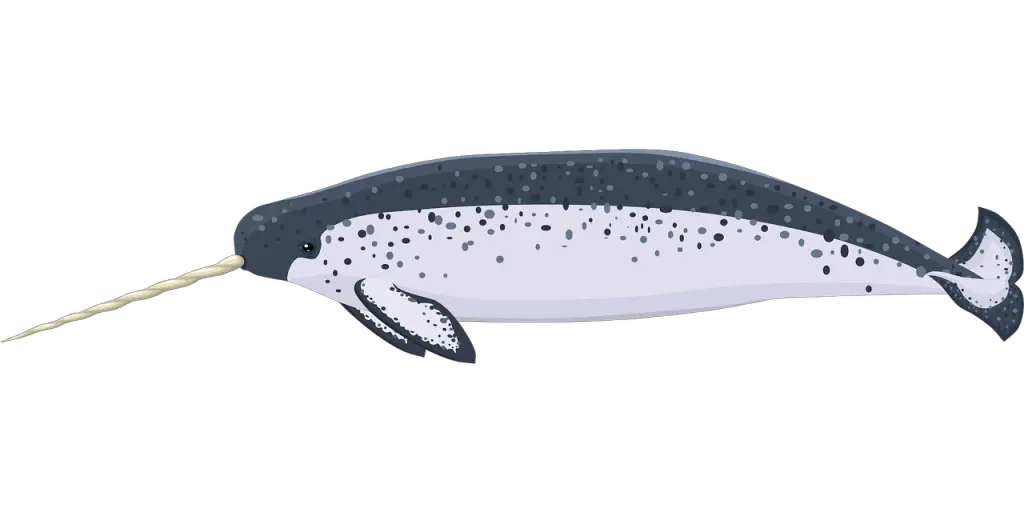
The narwhal has just one tusk, unlike other tusk-bearing species. The male of this whale has one tusk that develops out from the left side of its face. It is a top canine tooth that spirals clockwise into the upper lip. The narwhal’s hollow tusk may grow to 10 feet long.
Due to the tusk’s nerves, some experts believe the guys are actually communicating information. Narwhals use their tusks to break through the ice and hunt for food on the bottom.
Like a billfish, they utilize it to shock prey. The tusk is the whale’s only genuine tooth. Narwhals generally swim in groups and use a variety of noises to warn off predators and find food.
There are also some Extinct Animals
Woolly Mammoth
- Scientific name: Mammuthus primigenius
- Type of Animal: Mammal
- Diet: Herbivores
- Tusk Size: 12 feet
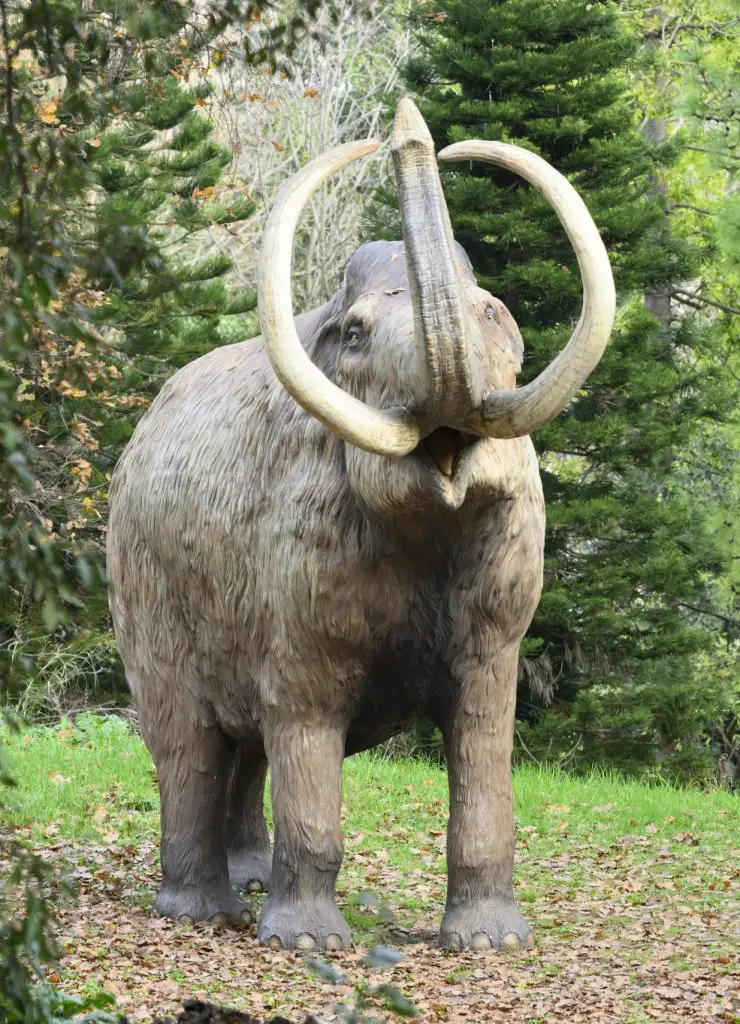
Known as the woolly mammoth, it is a species of mammoth that belonged to extinct animals that flourished successfully thousands of years ago and were related to the current living elephants. It was relatively larger than today’s elephants but lived for shorter periods of time in order to avoid heat loss, unlike today’s elephants.
Are There Any Animals That Have Both Stripes and Tusks?
Yes, there are animals with stripes that also have tusks. One such example is the wild boar. These formidable creatures feature a striking striped coat and possess large, curved tusks. The intersection of stripes and tusks in certain animals adds to their distinctiveness in the animal kingdom.
Gomphotheres
- Scientific name: Gomphotheres
- Type of Animal: Mammal
- Diet: Herbivores
- Tusk Size: 4 feet
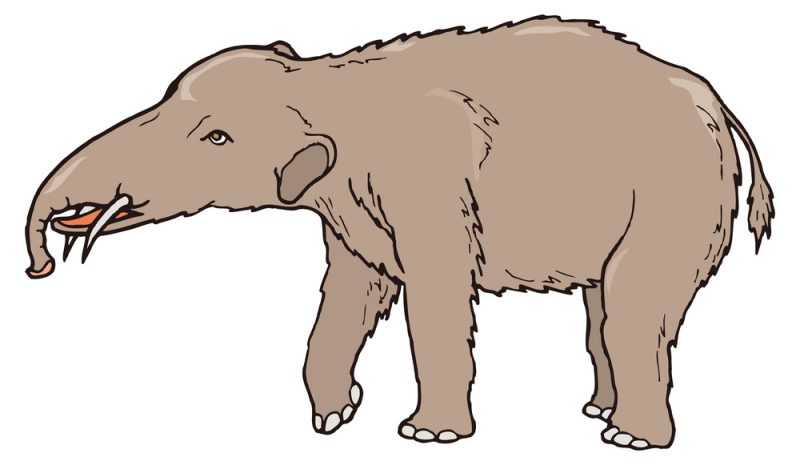
The Gomphotheres were ancient mammals that were similar in appearance to elephants but did not belong to the family Elephantidae. They existed throughout the Miocene and Pliocene epochs in North America and other countries, and were thought to have been extinct by the end of the Pleistocene epoch. One of the most notable and distinguishing characteristics of the Gomphothere is that some of them have lower tusks in addition to the normal upper tusks, giving them a total of four tusks.
Conclusion
Those are the animal species found in the wild that comprise the tusk. Mostly the tusk is used in defending, food searching, fighting with other males for dominance, and for removing barriers. It is an interesting fact that these tooth-like structures are not involved in chewing food material because these are protruding out of the mouth cavity.

